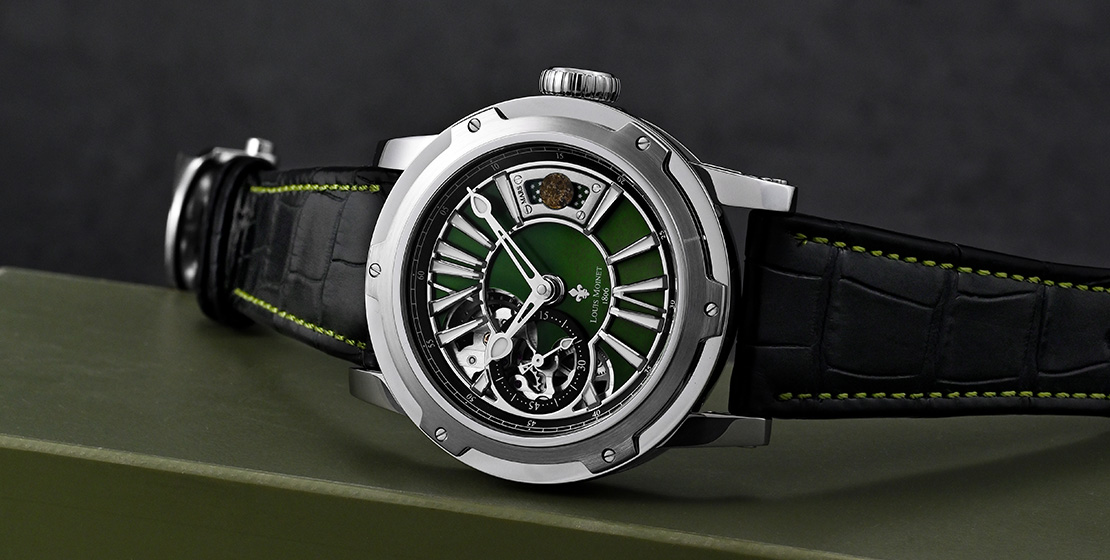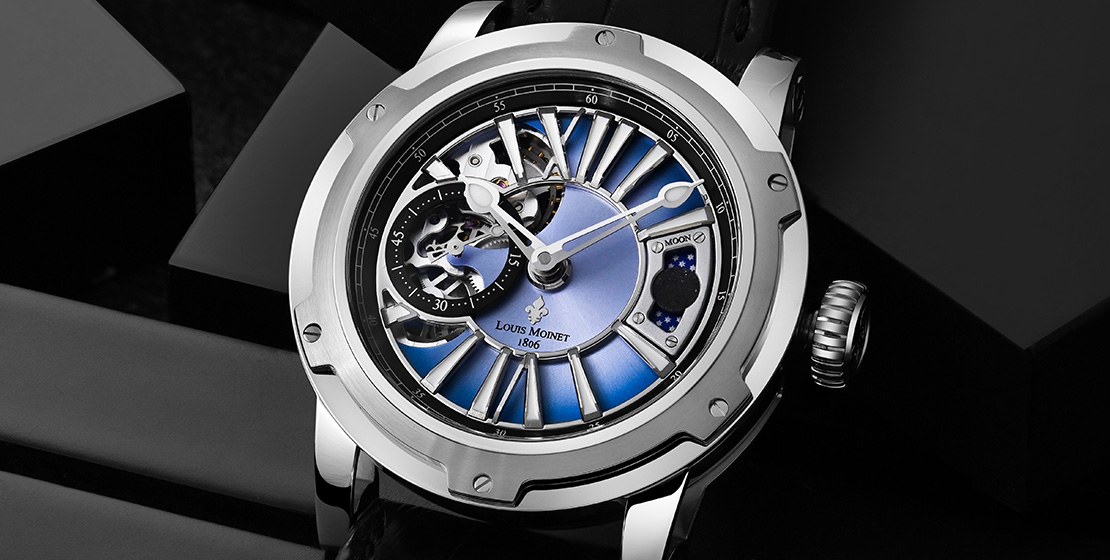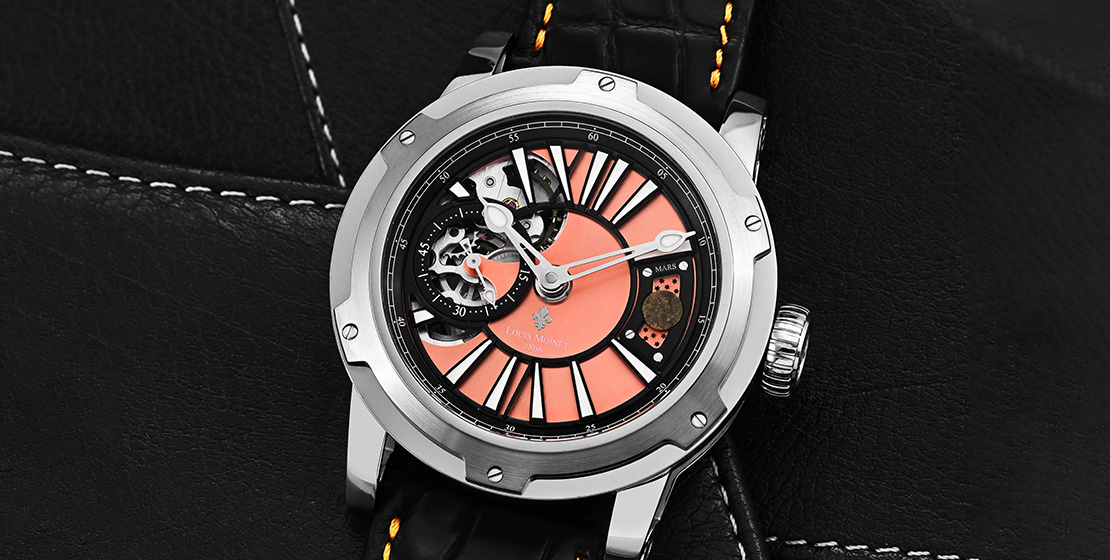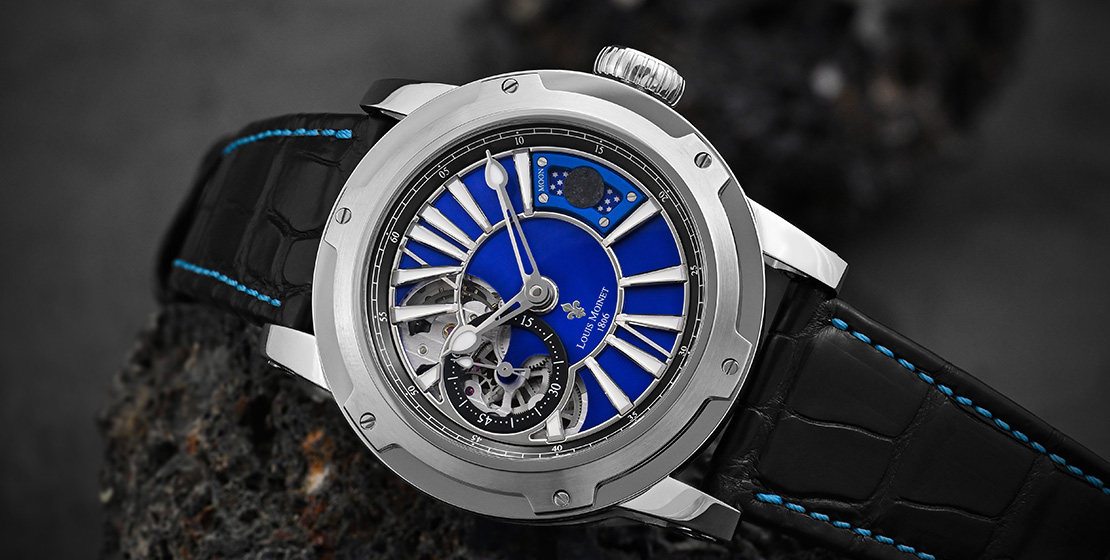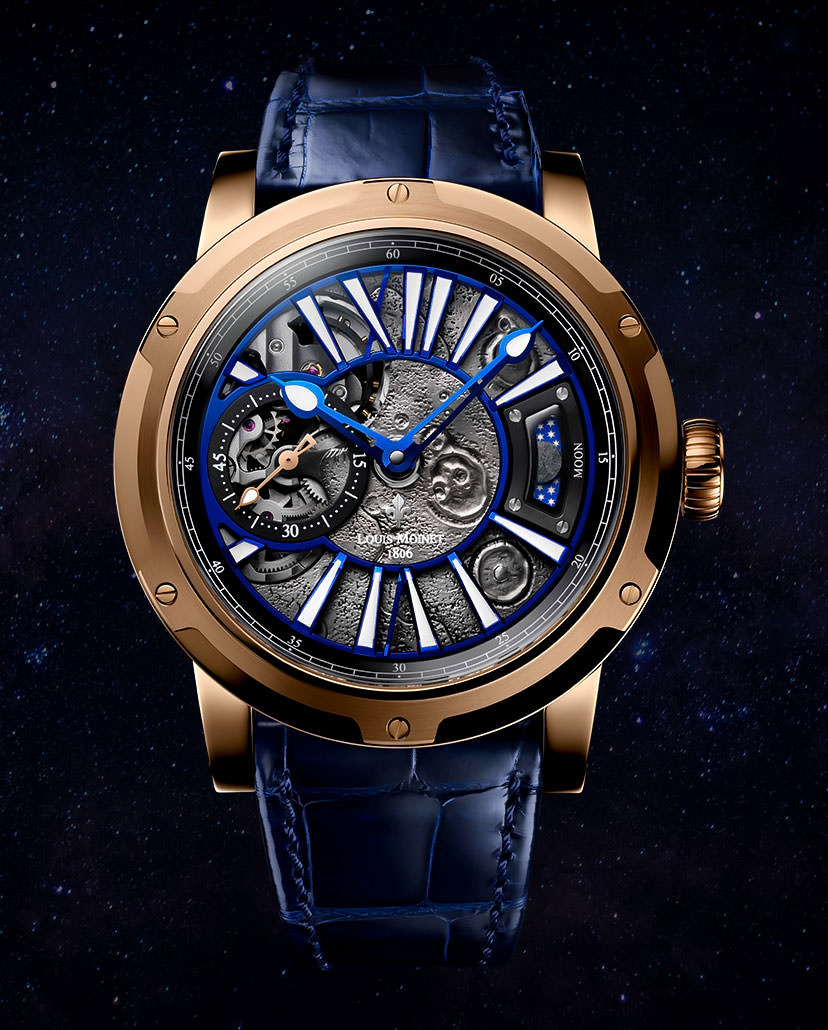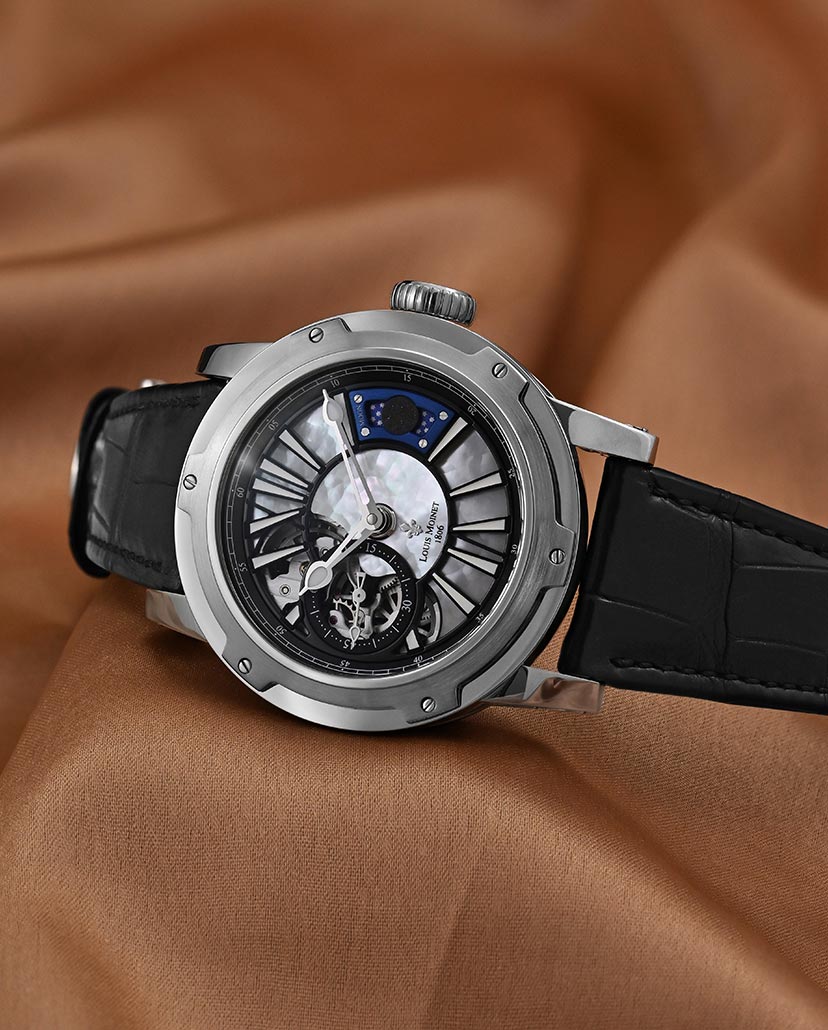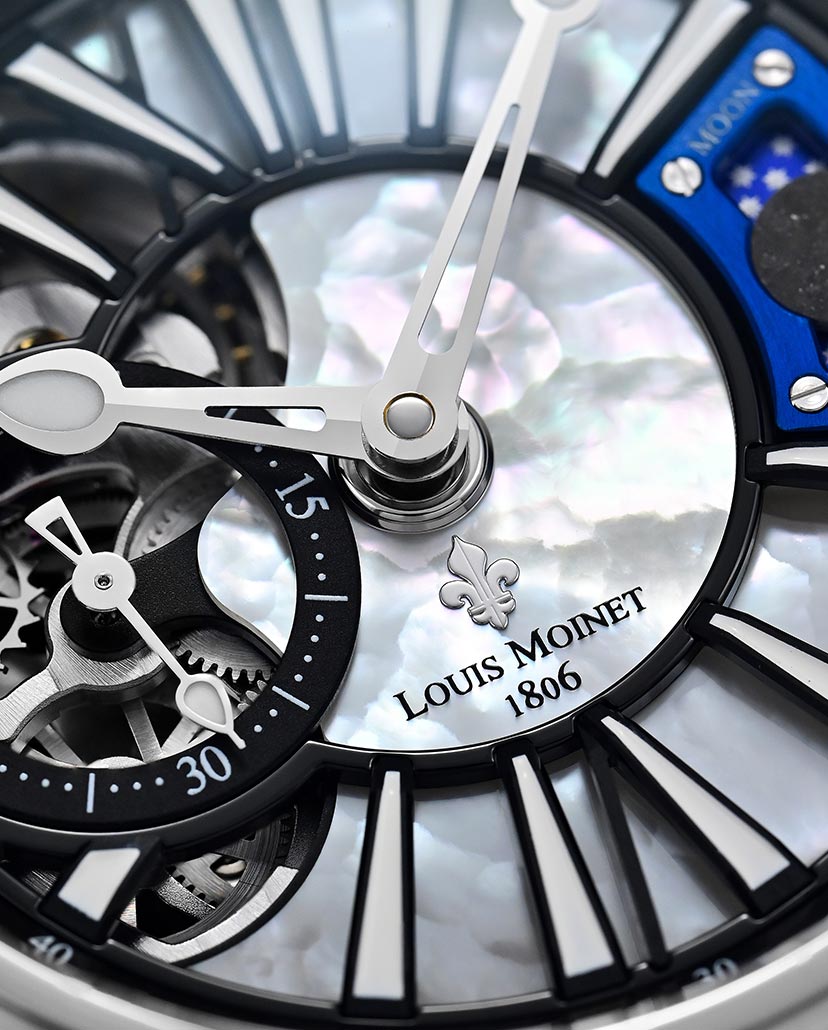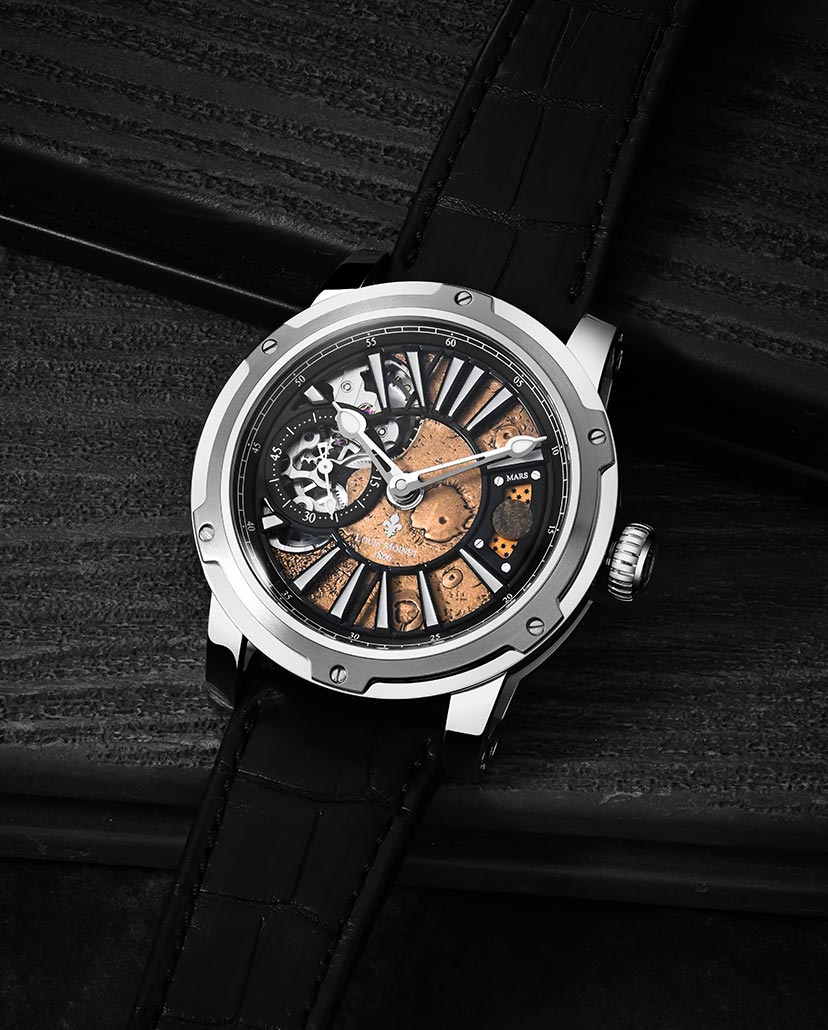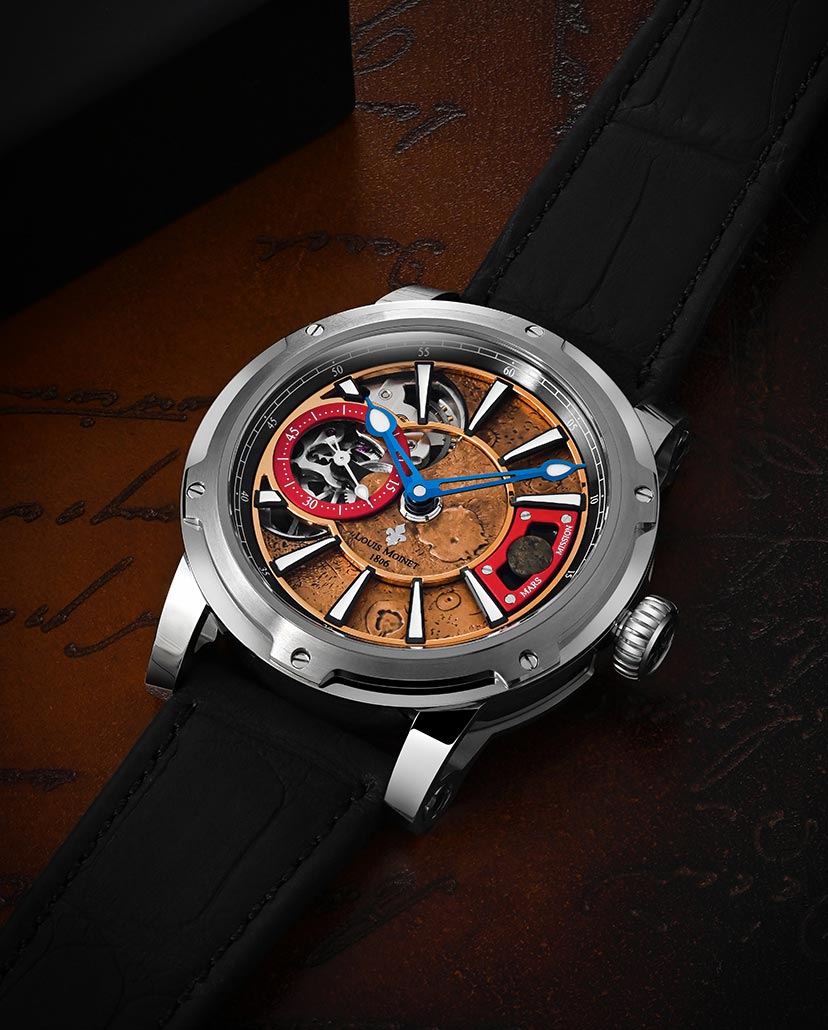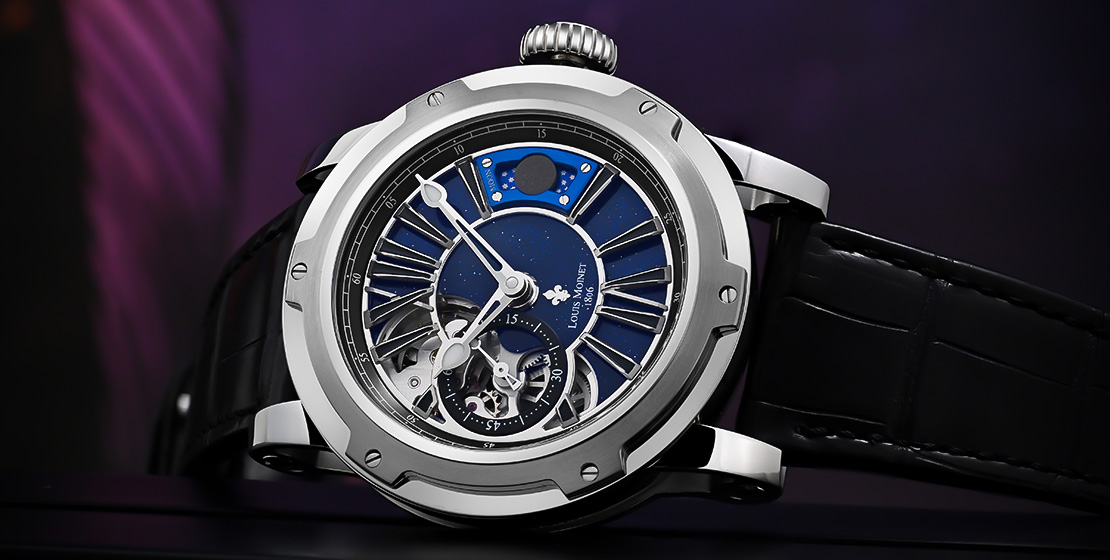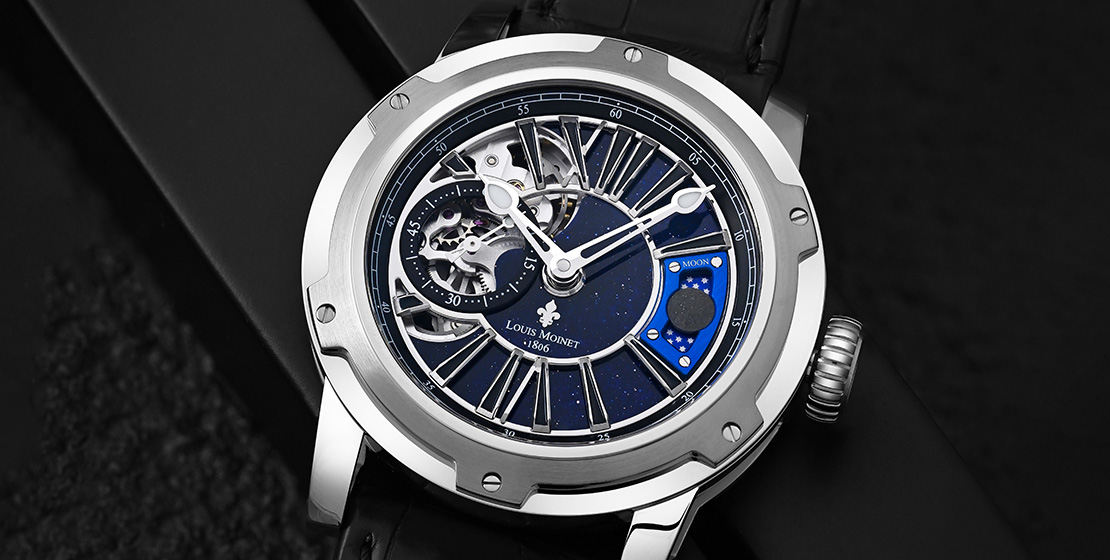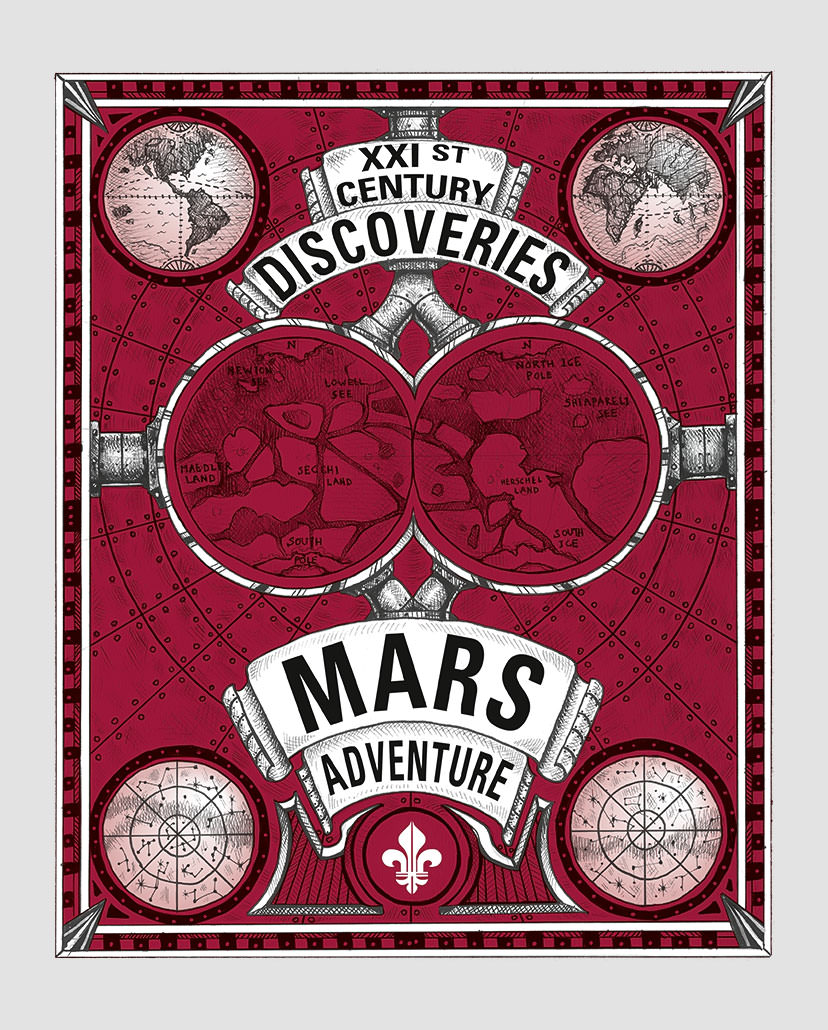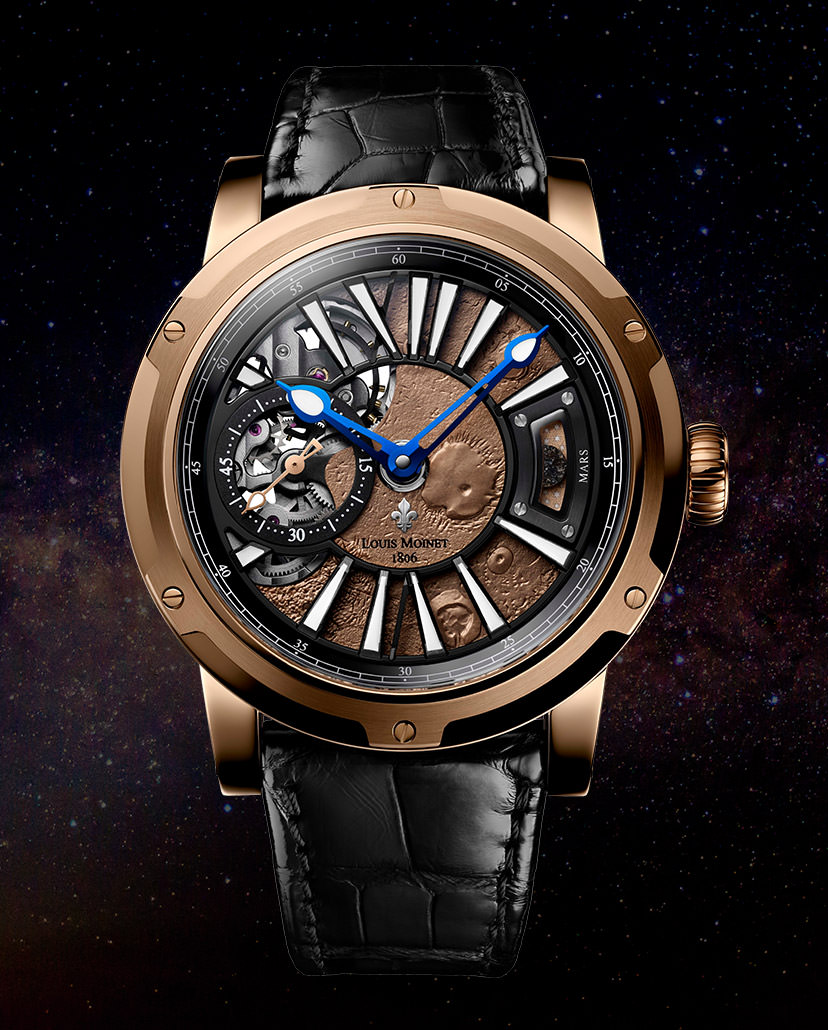ReviewA Space Odyssey: Here’s Why Louis Moinet’s Moon And Mars Timepieces Are Truly Out Of This World
Avant-garde watchmaker Louis Moinet have always managed to beguile audiences with their unique creations. Whether it’s their contemporary take on chronographs or a revolutionary approach to craft astronomical time-tellers; the brand continues to experiment with new materials and technologies to churn out groundbreaking pieces such as the Moon and Mars novelties
May We Recommend
Identity is imperative in the watchmaking world, especially when a plethora of brands are constantly seeking to woo customers with their edgy designs, technological innovations, complex structures, and precision engineering. While most brands have successfully managed to carve a niche for themselves with iconic pieces that stand out from the crowd; this has usually been a prerogative of maisons with illustrious legacies. Thus it becomes even tougher for younger brands since the level-playing field is skewed, and they have to try even harder to be distinct when creating something that doesn’t end up looking like a replica crafted by the haute horlogerie legends. Louis Moinet, however, have been able to break into this bastion with their avant-garde offerings that are, more often than not, conversation starters in collectors’ circles.
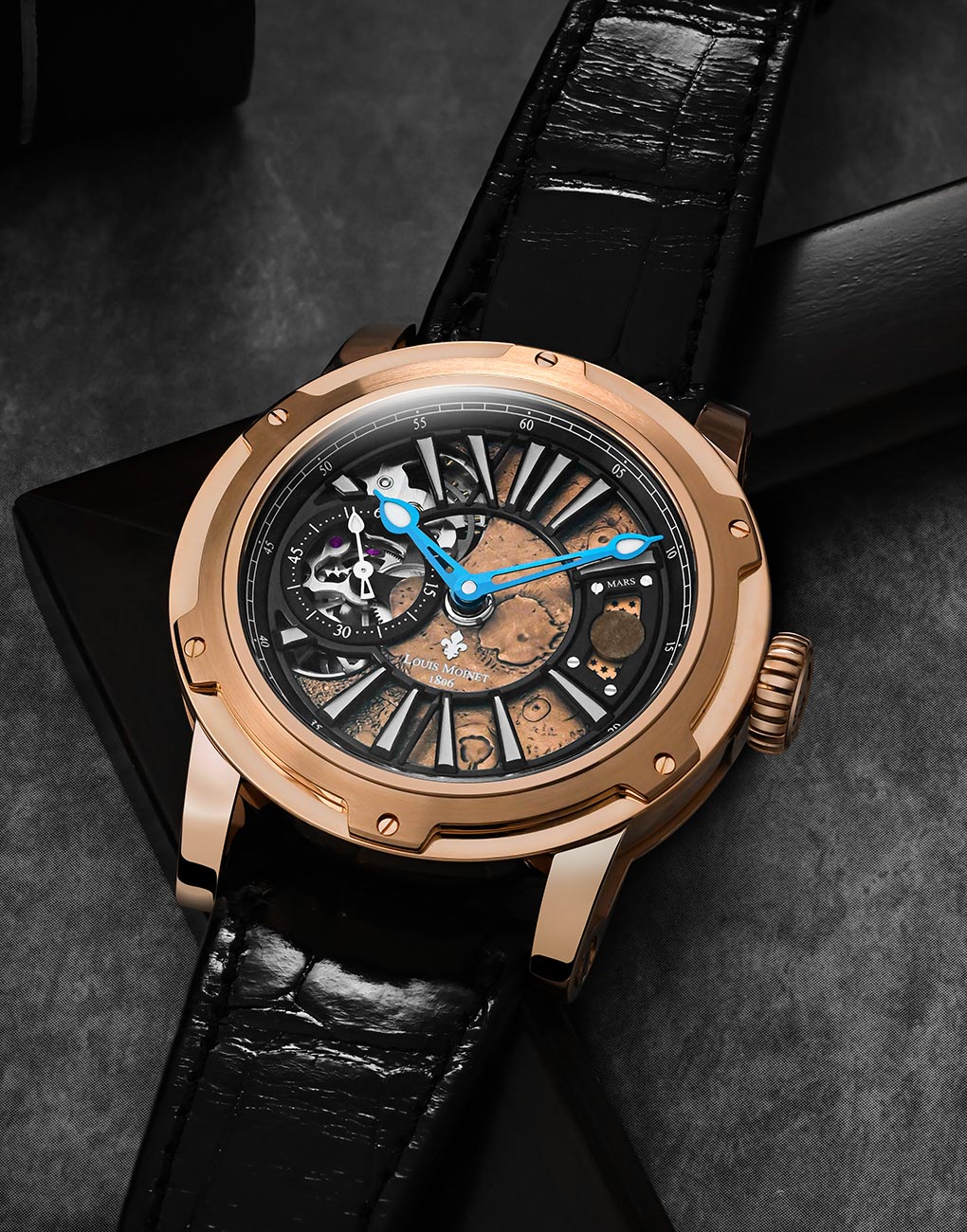
Established in 2004, while the brand is named after the eponymous 19th century watchmaker—who created the first pocket chronograph in 1816; Louis Moinet have built a success story with their state-of-the-art timepieces that exude a neo-retro vibe inspired by steampunk designs. It’s almost like a theatrical performance—except the drama—that happens on the wrist. The atelier situated in Neuchâtel, Switzerland, manufactures watches under two broad pillars: Cosmic Art and Mechanical Wonders—with only one-of-a-kind pieces or limited editions. Their opulence is often enhanced by the use of unusual materials such as fossils and meteorites, combined with bespoke fine watchmaking complications in a unique creative approach. Two such noteworthy timepieces are the Louis Moinet Moon and the Mars—which pay homage to the celestial world by capturing the essence of the universe in a nutshell, ie with their use of space material such as Mars rocks and shards of lunar meteorite.
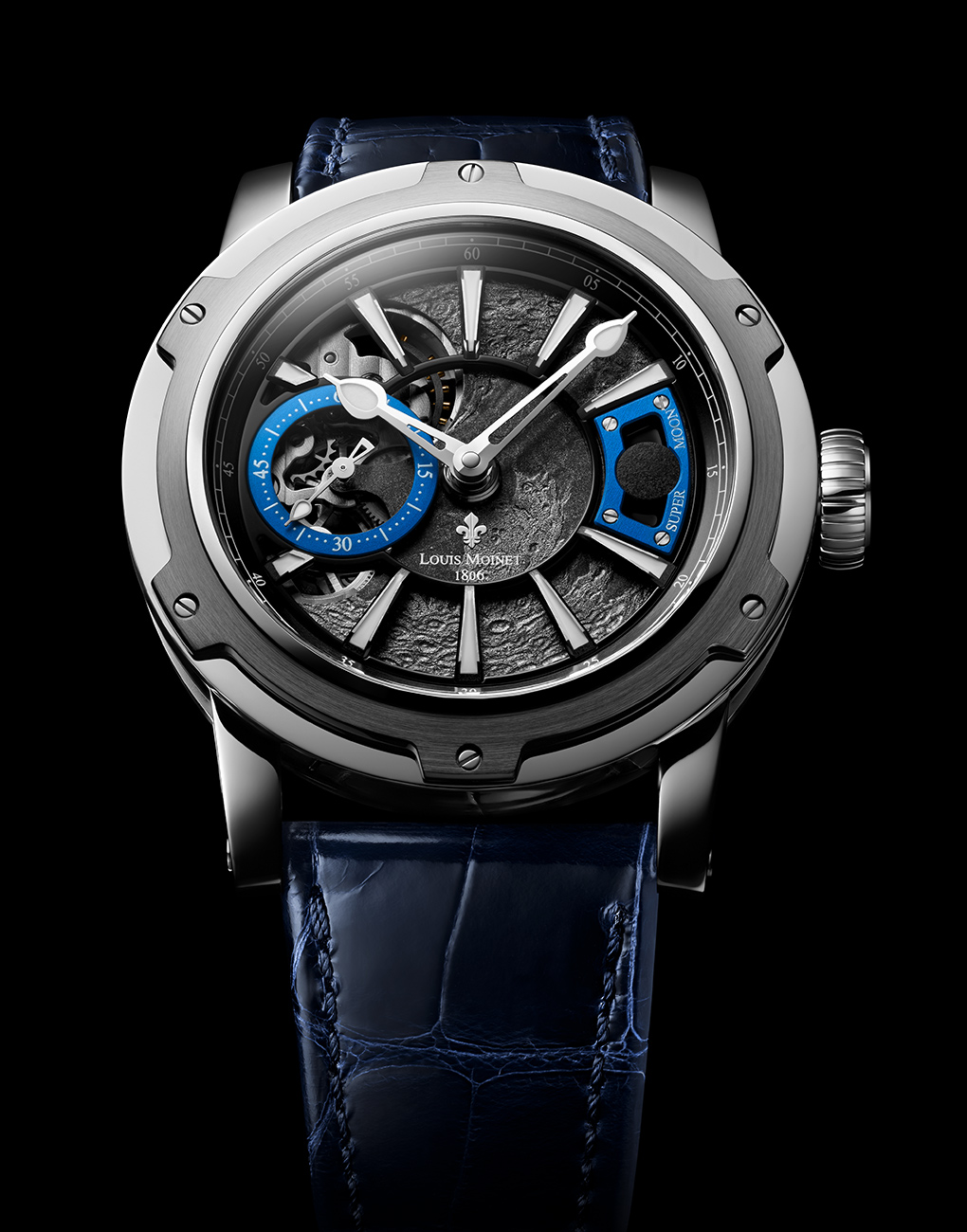
Launched in 2019, both timekeepers are available as limited-editions, comprising 12 pieces each in rose gold and 60 each in stainless steel. Let’s take a closer look at these two spectacular watches that highlight the maison’s core values—creativity, exclusivity, art and design.
Moon And Mars: The Inspiration And Challenges
For these timepieces, Louis Moinet have built on their two pillars: Mechanical Wonders and Cosmic Art. The first category is the reinterpretation of the essence of watchmaking, where the aim for the product is to be unique, based on an innovative mechanism. The second pillar—Cosmic Art—also comprises mechanical watches, but they encapsulate elements that are synonymous with the conquest of space. “The Moon and Mars creations incorporate fragments of their respective heavenly bodies. To do so, we are working with Luc Labenne, the most famous meteorite hunter in the world,” says Jean-Marie Schaller, CEO of Ateliers Louis Moinet.
The Moon timepiece takes its cues from Around the Moon, a landmark work by author Jules Verne. The Mars watch is a romantic vision of astronomy and it takes its inspiration from Percival Lowell, a contemporary of Louis Moinet’s, who thought that the dark marks he had observed on Mars were a series of lakes and canals. “The inspiration comes from my childhood and the numerous books I read. As a boy, Tintin [The Adventures of Tintin] showed me there were no boundaries. I observed Mars and the Moon from a 100-year-old telescope, and that’s when I realised I was only a small part of this limitless world,” states Schaller. And this led him to create ‘space poetry’ with his brand, expressed in a variety of rare pieces, manufactured only in limited editions. “Exclusivity is an important factor, because lunar and Martian meteorites sell for literally astronomical prices—they’re among the most expensive materials in the world,” he explains.
However, in haute horlogerie, getting an idea for a watch is one aspect; it’s the execution that’s always a humungous challenge. “From creation to craftsmanship, there is a gap. For instance, cutting fragments of Moon or Mars is a very delicate task, and mistakes are unthinkable since they are extremely rare finds on the Earth’s surface. So, I only entrust Daniel Haas, my good friend and number one [specialist in the realm of semi-precious stones] in the world to execute this task,” expresses Schaller.
Therefore, the resulting timepieces are highly exclusive, made for a discerning clientele that seek out genuinely precious acquisitions, and are approximately priced between CHF 15,000 and CHF 39,500 (INR 12 lakh and INR 32 lakh).
The Dial: A Perfect Display Of Space Material
Wearing the Mars or the Moon watches is like having your very own piece of eternity on your wrist—a quirky ticket to an interstellar journey. The Red Planet has, for long, been the subject of intrigue as numerous studies, research projects and space missions have been launched in order to discover life on its Martian surface. The timepiece’s dial faithfully depicts the surface of the planet, and features a genuine Mars meteorite fragment in a capsule at the three o’clock position. This is further enhanced by a stunning reproduction of its legendary volcanoes: the Olympus Mons, placed right at the centre; the Ascraeus Mons, positioned between one and two o’clock; the Pavonis Mons, between four and five o’clock; and the Arsia Mons, located between five and six o’clock. This has been recreated using a brass dial, which complements the brand’s sizeable 45.4mm Neo case in either red gold or stainless steel.
And the craftsmanship for both the pieces has been carried out painstakingly by the maison. “The normal process of creating one watch—from a blank sheet to the final product is about two years. First of all, we have to source the extraterrestrial material and make sure we have enough to craft the limited editions. Then, we have to make different trials to create the right emotion with a surprising design,” says Schaller.
The Louis Moinet Moon wristwatch also showcases a striking dial that features a capsule containing genuine lunar meteorite fragment at three o’clock. This is set against a backdrop—a fine representation of the lunar surface, and the brand have even created accurate depictions of the famous craters—Gassendi, Tycho and Cassini—found on our satellite. This has been executed on a brass dial as well to get the right textures. Schaller further elaborates, “Since we wanted to go beyond the existing standards, we had to invent a new construction for the case and only the indexes. And when you look at them, they are suspended mid-air. This was very challenging and took a lot of time to achieve. However, it was worth all the efforts, as it gives an unparalleled three-dimensional depth to these creations.”
The Mars and the Moon watches showcase three different sets of open-worked elements—on the hour markers, on the dial, and on the lugs and vertical bridges—for a layered effect. The hour markers, with three different geometrical sections, and satin, diamond-studded finish—are designed to reflect the flange that packs them in on the dial. One can observe the escapement between eight and 12 o’clock, beating at a frequency of 28,800vph, and the offset seconds hand placed carefully at nine o’clock to provide an unobstructed view of the mechanism.
The Movement: Calibre LM45
These celestial delights are powered by the high-precision automatic calibre LM45, which includes 22 jewels, and supplies the timepieces with a power reserve of 48 hours. One can view the inner workings of this movement from an open-worked section between eight and 12 o’clock on both the Mars and Moon watches, and is housed in Louis Moinet’s Neo case—structured around two vertical bridges that span the timepieces, securing the strap at each end of their open-worked lugs. On reversing the watch, one can also get a glimpse of the movement with the oscillating weight in the same shade as the dial (copper for Mars and blue for the Moon version), with a concentric Clous de Paris finish.
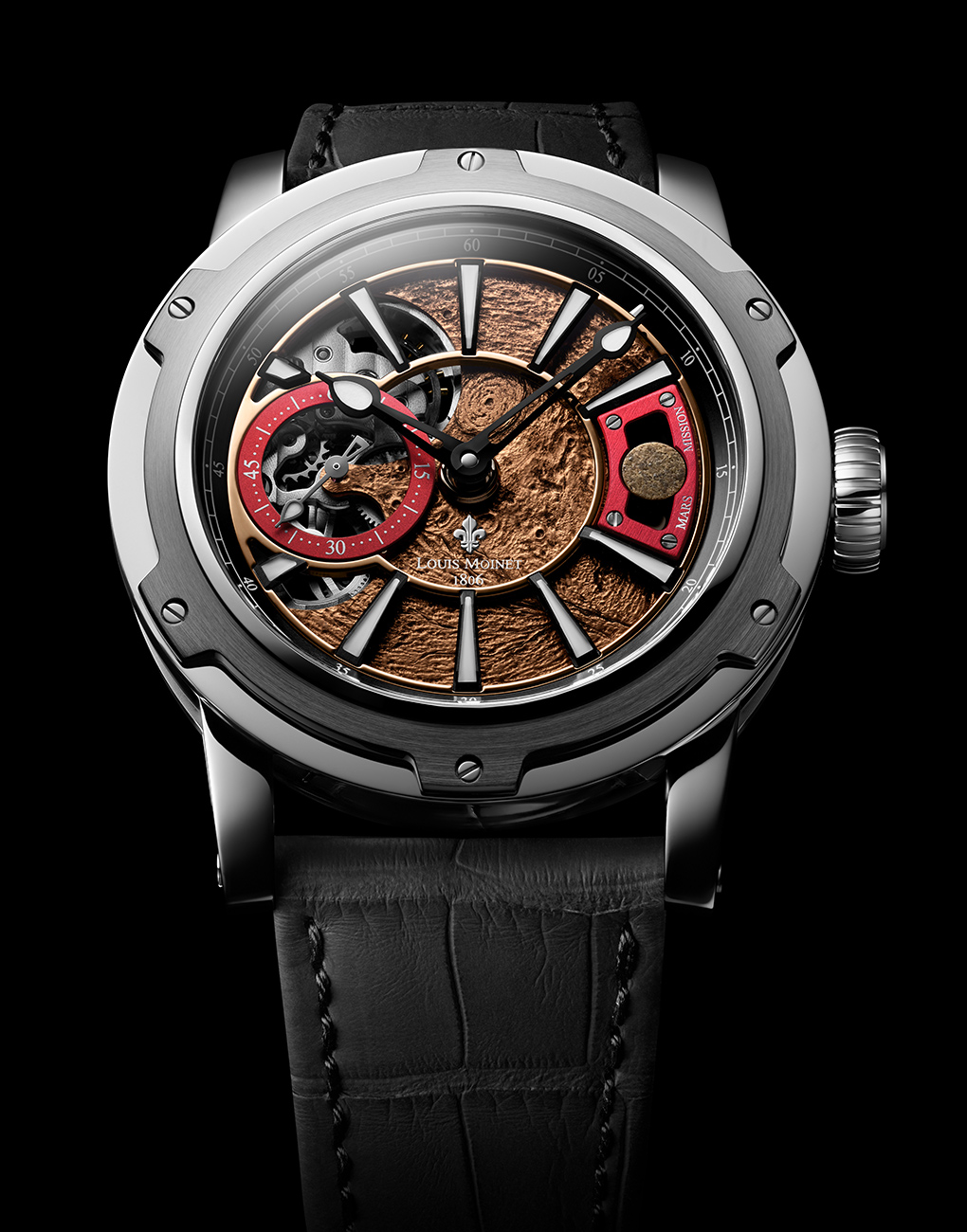
Water-resistant to 50m, the Mars watch is presented on a brown leather strap, whereas the Moon timepiece is mounted on a blue leather strap, both fitted with a folding clasp with the brand’s fleur-de-lis motif. Special presentation boxes punched with Martian or lunar fragments have also been designed to give a wholesome luxury experience to the customer.
“These two creations have received a great response all over the world. India is important in our strategy, as the market is well respected because of its high number of connoisseurs and watch lovers. We are also very happy with our partnership with Ethos [Watch Boutiques] because it is geared towards quality. It is very exciting for me to pursue our growth in this beautiful country,” says Schaller.

True to its DNA of crafting watches inspired by the cosmos, Louis Moinet have certainly left no stone unturned—on these heavenly bodies even—when it comes to these galactic time-telling devices that let you own a piece from space for posterity. And the brand won’t rest till it explores higher realms.


